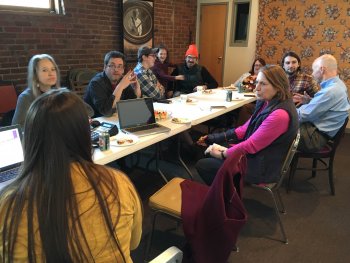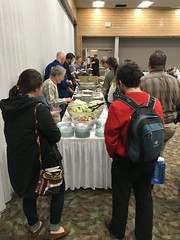KFTC’s New Energy and Transition (NET) Committee convened on August 8, and celebrated a significant triumph!
TRIUMPH:
EKPC “Community” Solar Farm, KFTC and partner public interest groups played a pivotal role in convincing East Kentucky Power Cooperative (EKPC) to pursue a solar farm. On July 21, EKPC requested regulatory approval for a 60 acre, 8.5-megawatt solar farm patterned after the Berea Solar Farm model! If approved, member/customers of EKPC’s 16 distribution cooperatives would be able to purchase 25-year “licenses” at $460, per 335-Watt panel. The solar farm would be located adjacent to EKPC’s headquarters in Winchester. If approved, distribution co-ops like Blue Grass Energy would choose whether, or not to make licenses available to their member/customers.
When we succeeded in stopping EKPC’s plans to build a new coal-fired power plant a condition of the settlement included the creation of a “clean energy” collaborative among EKPC, its sixteen distribution co-ops, KFTC and our partner public interest groups. Co-op staff were skeptical that their member/customers had interest in renewable energy because their EnviroWatts program, which adds a charge to participating customers’ bills to help support EKPC’s landfill gas generation, had low levels of participation. We were able to convince the utilities that the EnviroWatts model was the problem; that a Berea Solar Farm type of model would have appeal that the EnviroWatts model could not match.
Members Tona Barkley and our own chapter’s Steve Wilkins represented KFTC in the collaborative. Two other Madison County chapter members, Steve Boyce and Josh Bills, were instrumental in bringing the Berea Solar Farm to life. The Berea Solar Farm and its approach to community solar gave EKPC a model that they could run with to create their own, much bigger version. Let’s celebrate!
[There are many types of “community” solar. While the EKPC model keeps all assets on the utility’s side of the meter, there are other community solar farm models that democratize electric power by putting farms within the communities that use power from them. These farms are on the customer’s side of the electric meter.]







